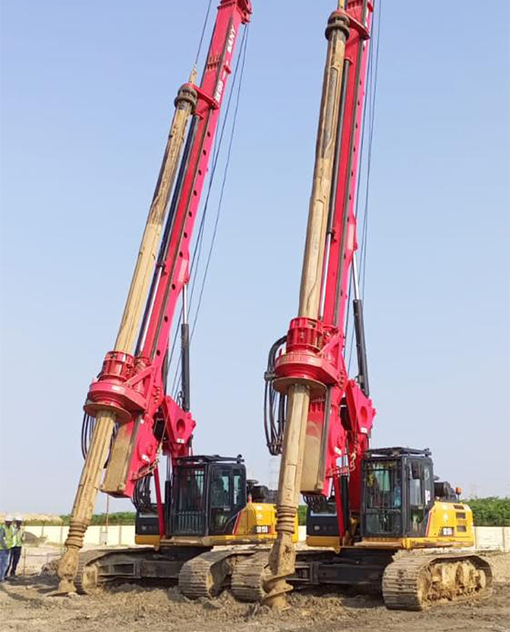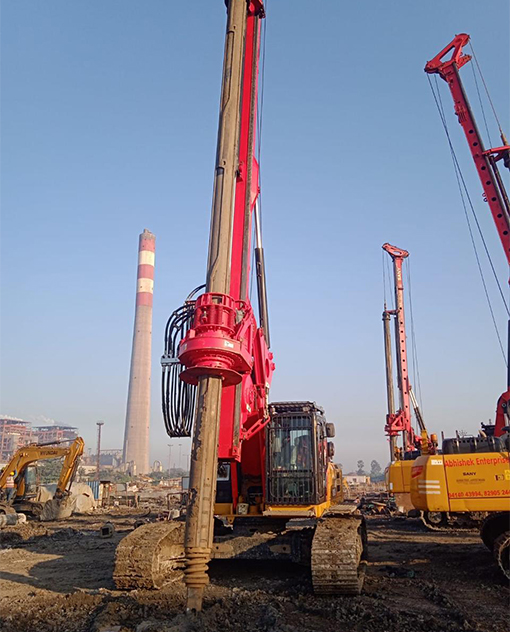Our Product Descriptions
Bored cast-in-situ piles, also known as drilled shafts or bored piles, are a type of deep foundation element constructed by excavating a hole.
Bored cast-in-situ piles, also known as drilled shafts or bored piles, are a type of deep foundation element constructed by excavating a hole into the ground and filling it with concrete. This method is commonly used to support heavy loads and is especially effective in areas with challenging soil conditions. Here's a detailed description of the process:
Bored cast-in-situ piles offer several advantages, including high load-bearing capacity, versatility in various soil conditions, and suitability for deep foundations in both land and marine environments. They are commonly used in a wide range of construction projects, including high-rise buildings, bridges, dams, and offshore structures.
Here's a breakdown of the process
- Drilling : The process begins with the drilling of a hole into the ground using a specialized drilling rig equipped with a drilling tool such as a drilling bucket, auger, or core barrel. The diameter of the hole typically ranges from 0.3 meters to 2 meters or more, depending on the design specifications and load requirements of the structure.
- Excavation : As the drilling progresses, soil and other excavated materials are removed from the hole either mechanically or by using drilling fluid (such as bentonite slurry) to stabilize the excavation and prevent collapse. The depth of the hole is determined based on the design requirements and soil conditions encountered.
- Reinforcement Installation : Once the desired depth is reached, steel reinforcement cages or bars are lowered into the hole. These reinforcements provide structural strength and help to distribute the load from the superstructure to the surrounding soil. The size and configuration of the reinforcement cages are designed according to the specific requirements of the project.
- Concrete Placement : After the reinforcement is in place, the hole is filled with concrete using a tremie pipe or pump. The concrete is typically of high strength and quality to ensure the stability and load-bearing capacity of the pile. The tremie method is often used to prevent segregation of concrete and ensure uniform distribution throughout the depth of the hole.
- Curing : Once the concrete is placed, it is allowed to cure and gain sufficient strength before any further construction activities take place. The curing time may vary depending on factors such as temperature, humidity, and the type of concrete used.
- Testing and Quality Control : Quality control measures are implemented throughout the construction process to ensure that the bored cast-in-situ piles meet the specified design requirements. This may include testing for integrity, load-bearing capacity, and alignment.
- Trimming and Finishing : After the concrete has cured, any excess concrete is trimmed from the top of the pile, and the surface may be finished as required to achieve the desired appearance or connection with the superstructure.

